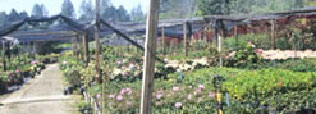- Agricultural Commissioner
- About Us
- FAQs
- Funding
- How We Are Funded
- County General Fund
- Pesticide Use Reporting
- Oak Death Inspection
- Pierce’s Disease Control
- Pierce’s Disease Nursery Treatments
- Organic Crops Program
- Seed Inspection
- Nursery Inspection
- Farmers Market Inspection
- Land Use Planning
- Pest Control Business Registrations
- Citrus Maturity Inspection
- Programs
- How We Spend Our Time
- Pest Detection and Eradication
- Citrus Inspection and Commodity Regulation
- Pierce’s Disease Control
- Pest Exclusion and Plant Quarantine
- Seed Inspection
- Nursery Inspection
- Farmers Market Inspection
- Egg Quality Control
- Apiary Inspection
- Crop Statistics
- Pesticide Use Enforcement
- NPDES MS4 Permit Compliance Inspections
- Land Use Planning
- Toland Landfill Project
- Weights & Measures
- FORMS/DATA
- Notices
- APAC
- SALC GRANT
- Crop Reports
- Contact Us
- Agricultural Commissioner
- About Us
- FAQs
- Funding
- How We Are Funded
- County General Fund
- Pesticide Use Reporting
- Oak Death Inspection
- Pierce’s Disease Control
- Pierce’s Disease Nursery Treatments
- Organic Crops Program
- Seed Inspection
- Nursery Inspection
- Farmers Market Inspection
- Land Use Planning
- Pest Control Business Registrations
- Citrus Maturity Inspection
- Programs
- How We Spend Our Time
- Pest Detection and Eradication
- Citrus Inspection and Commodity Regulation
- Pierce’s Disease Control
- Pest Exclusion and Plant Quarantine
- Seed Inspection
- Nursery Inspection
- Farmers Market Inspection
- Egg Quality Control
- Apiary Inspection
- Crop Statistics
- Pesticide Use Enforcement
- NPDES MS4 Permit Compliance Inspections
- Land Use Planning
- Toland Landfill Project
- Weights & Measures
- FORMS/DATA
- Notices
- APAC
- SALC GRANT
- Crop Reports
- Contact Us
Pesticide Use Reporting Data Entry

Phytophora ramorum is fungus disease in oak trees that causes sudden death to members of this species, by interfering with the trees’ ability to transport food and water. The disease may be spread by the movement of nursery stock and other products made from unprocessed wood or wood products. There are many hardwood trees and shrubs that can spread the fungus. The disease occurs in the following counties in California, Alameda, Contra Costa, Humboldt, Lake, Marin, Mendocino, Monterey, Napa, San Francisco, San Mateo, Santa Clara, Santa Cruz, Solano, and Sonoma. The Federal Quarantine prohibits the movement of host material from the quarantine area into areas where the fungus is not established in order to protect and preserve the oak trees and oak woodlands, that are such an important part of the landscape in many areas of California.
Commercial nurseries who wish to ship products from the quarantine area must have a certificate issued by an authorized agricultural official affirming that the articles and commodities have been:
- Produced and maintained in an area which has been inspected to assure that the articles are not infested
- Grown in a manner that prevents infestation
- Tested and found to be free of the pest.
Ventura County is a non-infested county and The California Department of Food and Agriculture contracts with the Agricultural Commissioner to conduct inspections in nurseries that ship host material interstate and to sample and test for the presence of the disease. This helps to prevent the spread of the disease from the infested area. This program is a part of the Pest Exclusion and Plant Protection Division.




